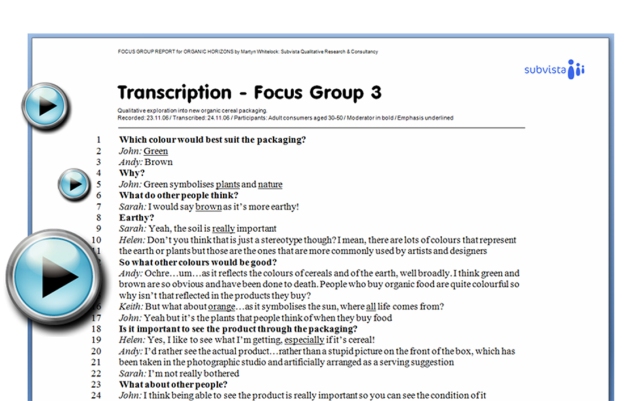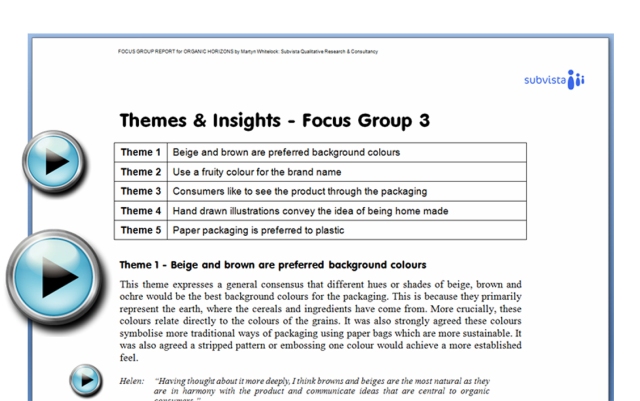Thematic analysis is historically a conventional practice in qualitative research which involves searching through data to identify any recurrent patterns. A theme is a cluster of linked categories conveying similar meanings and usually emerge through the inductive analytic process which characterises the qualitative paradigm. The exploratory power of this popular technique can be enhanced by the analyst lacking previous knowledge of the research topic as they are not guided by any preconceptions. Thus, the analyst does not have to be an expert in the research topic. However, in order to begin analysis a researcher must have at least some conceptual understanding to guide the insight processes.
There is no simple distinction between qualitative (naturalistic, contextual, idealist) and quantitative (experimental, positivist, realist) methodologies. Since analysts move back and forth between new concepts and the data, all research involves processes of induction and deduction, especially thematic analysis whereby induction creates themes and deduction verifies them.
Thematic analysis and grounded theory are methodologically similar analytic frameworks but the manner in which themes, concepts and categories are managed varies considerably between these approaches. They both attempt to represent a view of reality via systematically working through text to identify topics that are progressively integrated into higher order themes, via processes of de-contextualisation and re-contextualisation. Their procedures are more conceptually demanding than content analysis which employs a much simpler ordering of data. However, thematic analysis and content analysis are often confused. The former, through focusing purely upon meaning, promotes a more discursive interpretation since individual codes can cross-reference multiple themes, whilst the latter employs predefined mutually exclusive categories to count the frequency of a theme and is more appropriately used to statistically test any hypotheses.
Analytic process
1. Prepare the data for analysis
Transcribe the interview into text and format the document so the margin could be used for identifying individual bits of data. This can be done by assigning line numbers as identifiers for cross referencing.
2. Read the text and noting items of interest perform:
i. Initial reading of the text
An inductive approach to thematic analysis allows themes to emerge from the data, rather than searching for pre-defined themes. During the first reading make note of major issues as they come to mind in order to acquire a sense of the various topics embedded in the data.
ii. Re-read the text and annotate any thoughts in the margin
Examine the text closely, line by line, to facilitate a micro analysis of the data. This also promotes open coding which identifies any new information by de-contextualising bits of data embedded within the primary material.
3. Sort items of interest into proto-themes
This is where themes begin to emerge by organising items relating to similar topics into categories. Computers are great for pasting the line references together. This should be a fluid process so categories can be modified, developed and new ones allowed to emerge freely. At this stage keeping the themes as simple as possible assists flexibility in the categorisation process whereby any re-ordering of the clusters of categories can help create and re-define the initial themes.
4. Examine the proto-themes and attempt initial definitions
This phase of trawling back through the data examines how information was assigned to each proto-theme in order to evaluate its current meaning. A provisional name and flexible definition should now be created for each emerging theme.
5. Re-examine the text carefully for relevant incidents of data for each proto-theme
This second process of trawling back through the data is also called axial coding. It involves re-contextualisation whereby any data is now considered in terms of the categories developed through this analysis. Taking each theme separately and re-examining the original data for information relating to that theme is a vital stage in the analytic process because human perception is selective and the relevance of data can be easily overlooked. Furthermore, pieces of data previously assigned to a theme may in fact be contradictory.
6. Construct the final form of each theme
The name, definition and supporting data are re-examined for the final construction of each theme, using all the material relating to it. This stage of re-contextualisation focuses more closely upon the underlying meaning of each theme.
7. Report each theme
Finalise the name of each theme, write its description and illustrate it with a few quotations from the original text to help communicate its meaning to the reader.



